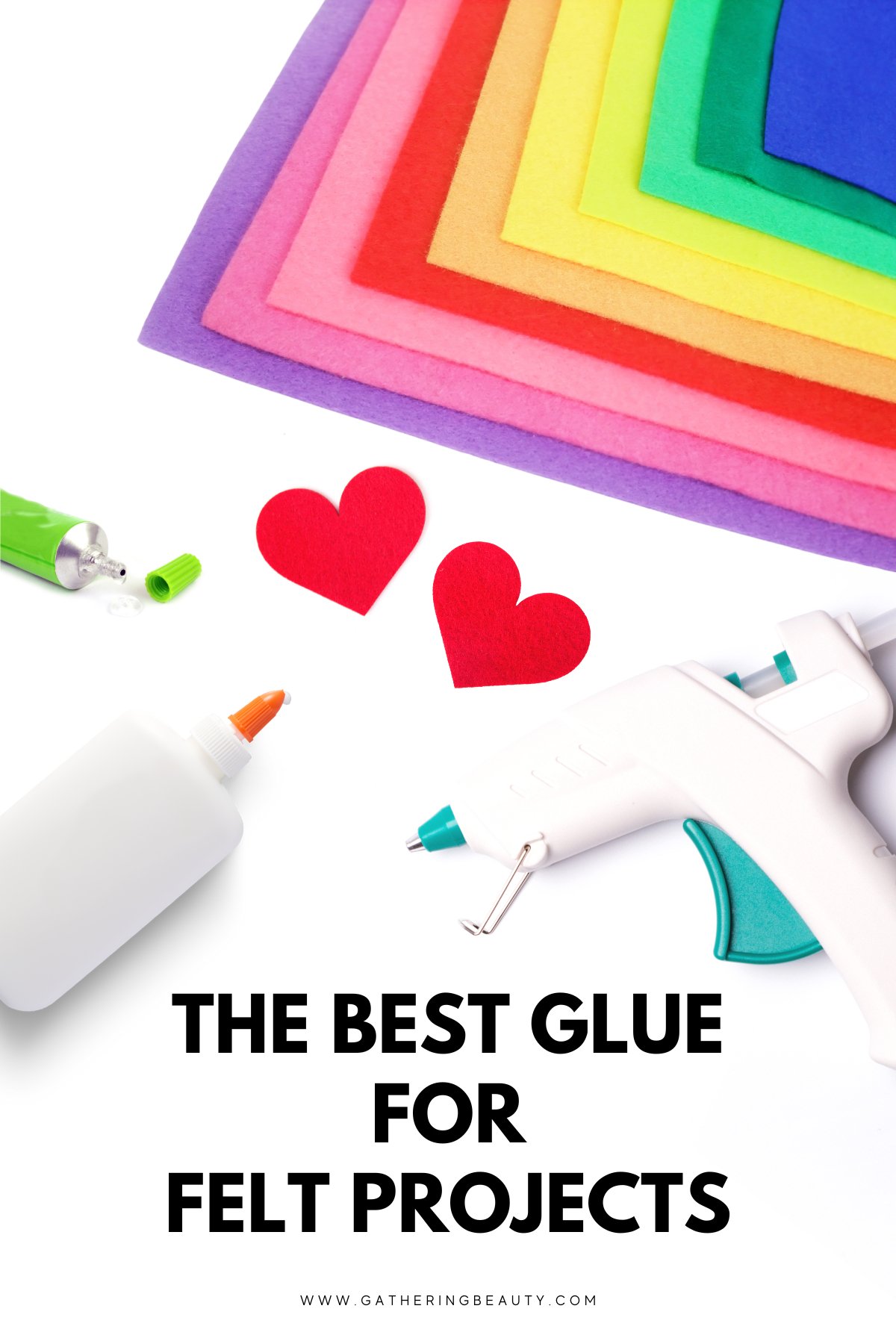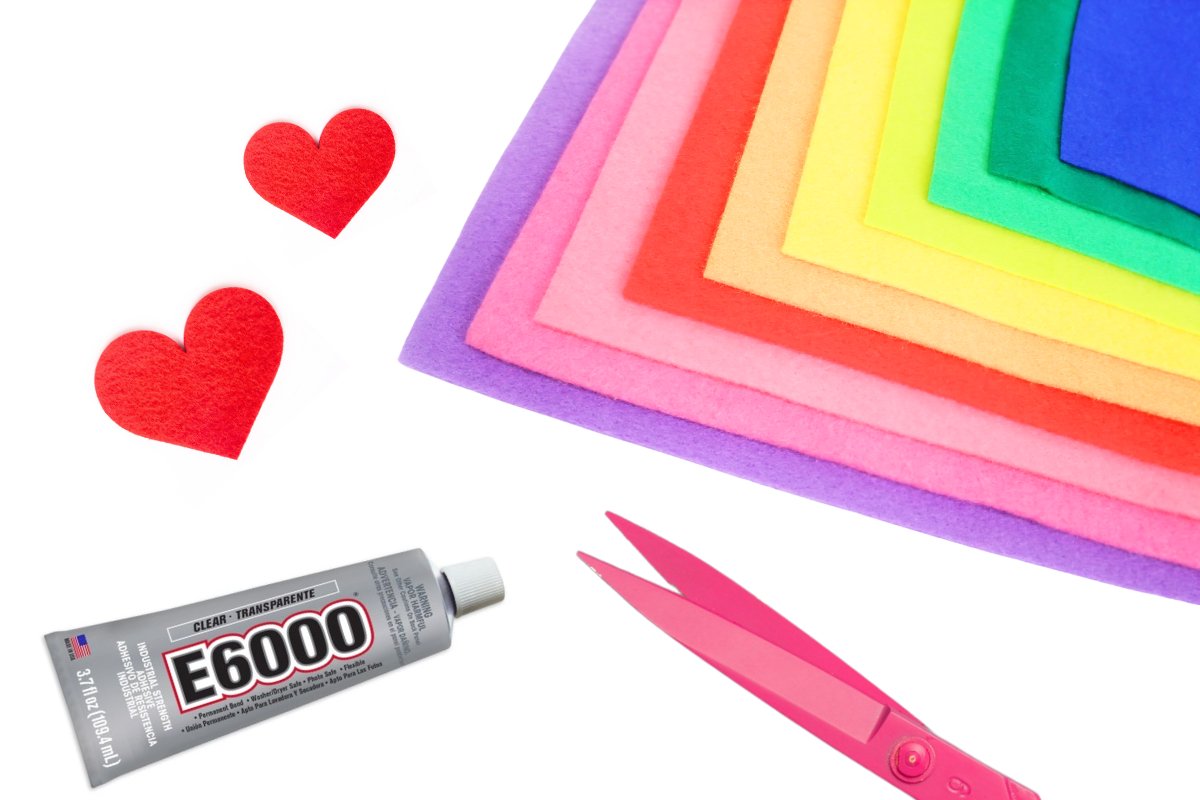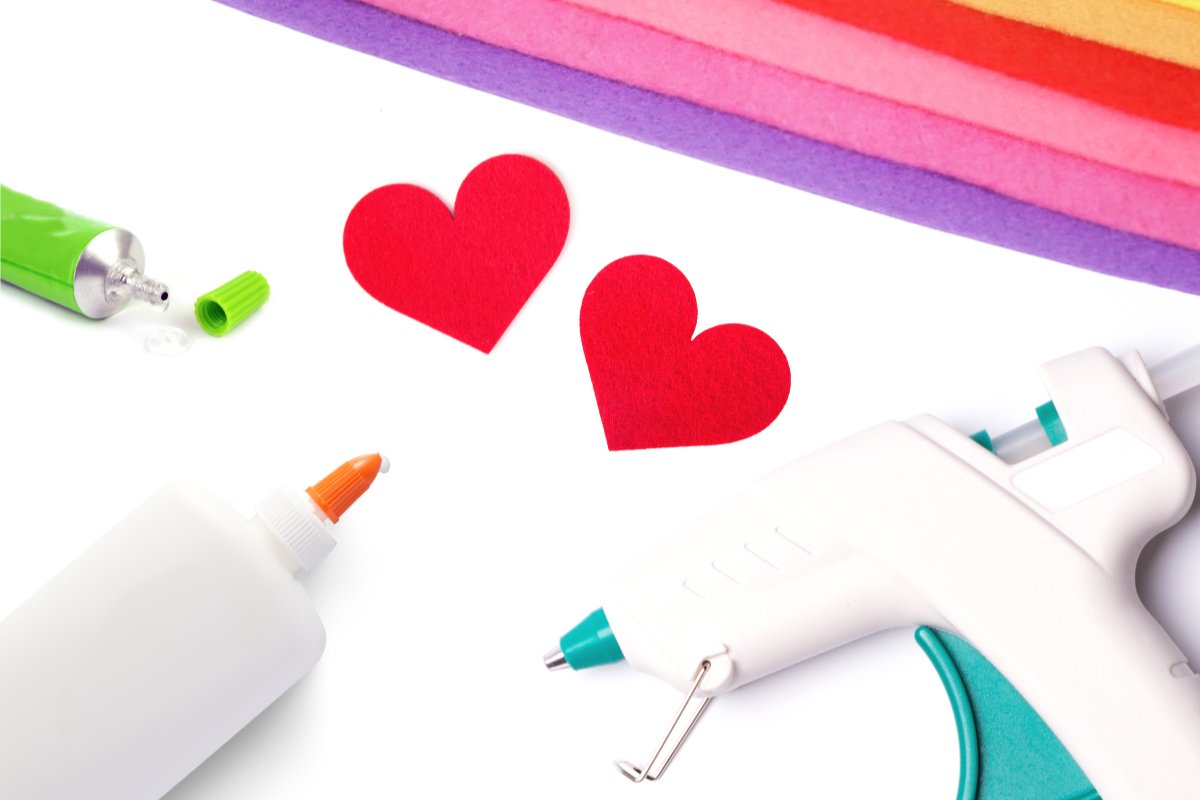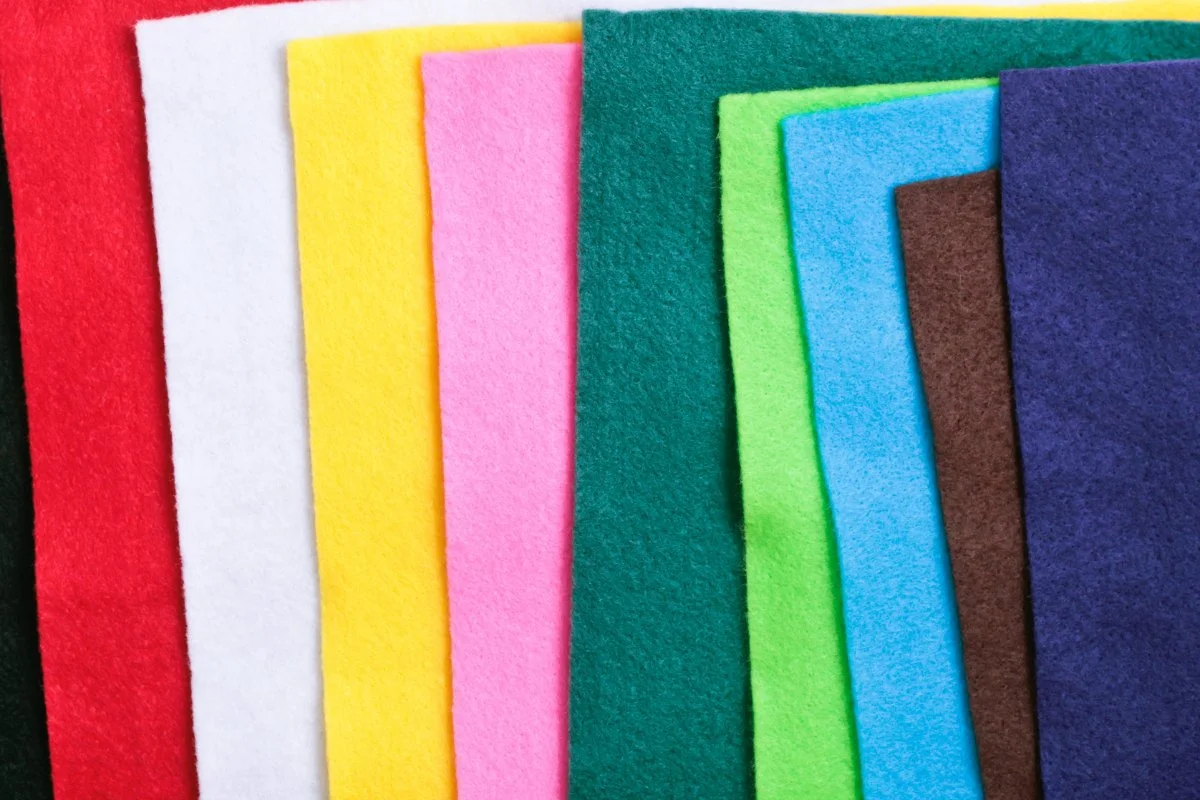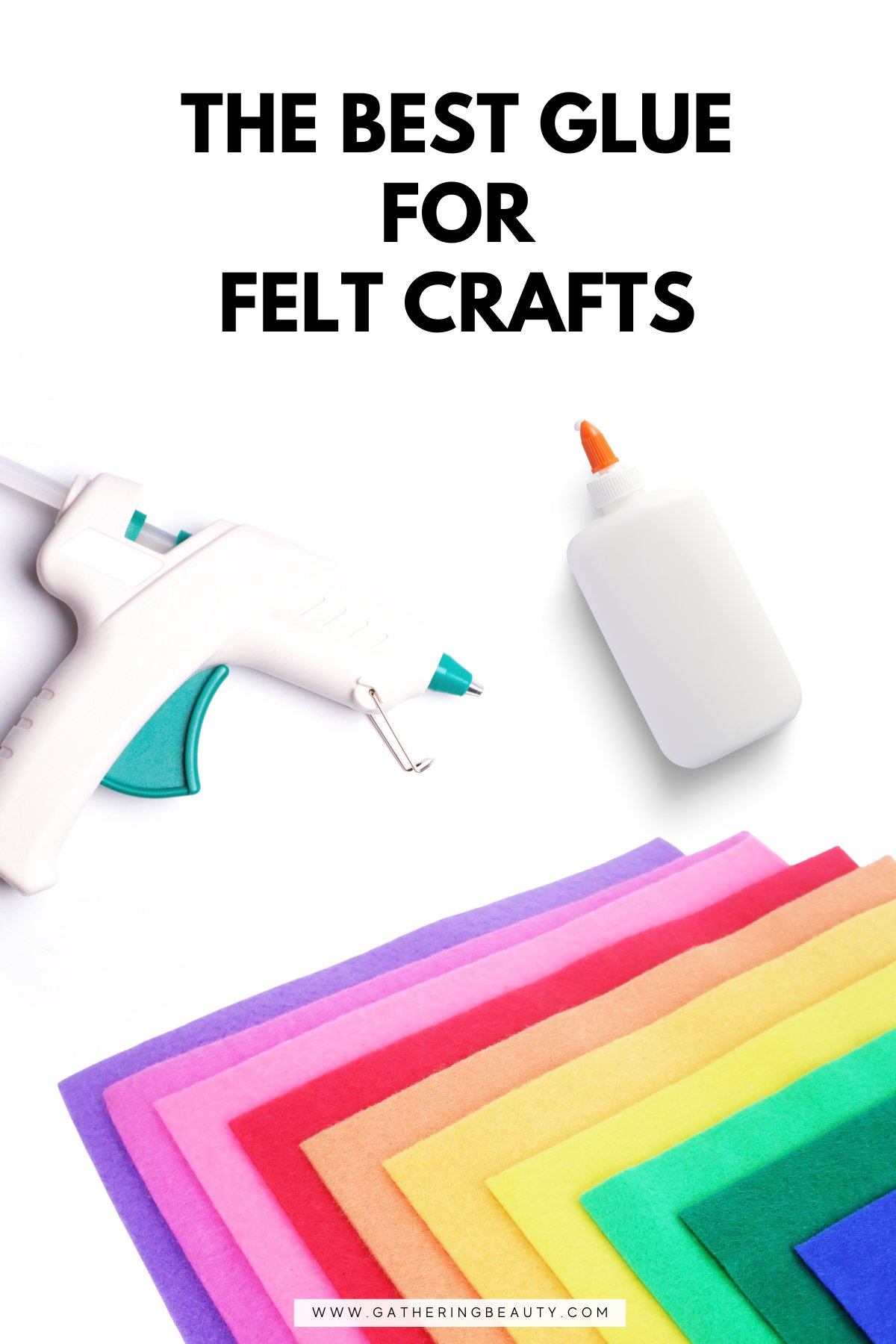The Best Glue For Felt
/Looking for the perfect glue for your next felt project? Look no further! These top picks for felt glue will help you achieve flawless results every time.
This page contains affiliate links. This means that if you make a purchase after clicking a link I earn a small commission but it doesn’t cost you a penny extra!
Best Glue For Felt Projects.
I'm so excited to dive into the world of felt crafts today. Have you been struggling to find the perfect glue to get your felt craft projects to stick together?
With so many options out there, it can be overwhelming to choose the right glue for your project. But don't worry, I've got you covered!
In this post, we'll look at the best ways you can get felt to stick together and help you find what type of glue will work best.
Crafting With Felt.
Felt is such a fun and versatile material to work with and can be used to make a wide range of crafts. Whether you're creating a cute plush toy, a bunch of flowers or a colourful wreath, felt can help bring your projects to life quickly and easily.
But, as with any craft project. choosing the correct glue or adhesive can be a bit tricky. Not all glue works well on felt. The right glue can make a huge difference between a project that falls apart and one that looks great and lasts for years to come.
There are several options to choose from, all available from most craft stores and each with its own unique benefits and drawbacks. Do you go for tacky glue, fabric glue or hot glue? Read on to find out.
Choosing The Right Glue For Felt Crafts.
1. Fabric Glue.
First up, we have fabric glue. Fabric glue is a popular choice for felt crafts because it dries clear and creates a strong bond that can withstand washing and regular wear and tear. It's perfect for attaching small embellishments, creating appliques, or even adhering large felt pieces together.
Aleene's Fabric Fusion.
Fabric Fusion is a popular glue option for felt crafts that require a strong bond. It's designed specifically for fabric and works well on both wool felt and synthetic felt due to its thick, durable formula.
Both Fabric Fusion and the Felt & Foam Tacky glue come in a squeeze bottle with a precision tip, making it easy to apply and control the amount of glue you use.
Pros:
Strong bond: Aleene's Fabric Fusion creates a strong, permanent bond between pieces of fabric that can withstand regular use and handling. This makes it ideal for felt crafts that will be frequently used or worn.
Quick-drying: Fabric Fusion dries quickly, typically within two hours, making it ideal for projects with tight deadlines or time constraints.
Dries clear: Like Tacky glue, Fabric Fusion dries clear, leaving no visible residue or smudging on your felt crafts.
Machine washable: Fabric Fusion is machine washable, which means you can use it on felt projects that will be exposed to moisture or require regular cleaning.
Ease of use: The precision tip makes it easy to apply.
Cons:
Messy: Fabric Fusion can be messy if you apply too much or if it oozes out of the felt edges. It's important to use it sparingly and to clean up any excess glue to avoid ruining the overall appearance of your felt craft.
Not suitable for all felt types: Fabric Fusion may not be the best choice for all types of felt. It's important to test the glue on a small, inconspicuous area of the felt first to ensure compatibility.
Aleene's Fabric Fusion is an excellent choice for felt crafts that require a strong, permanent bond. Its quick-drying time and machine-washable formula make it a good option.
Want to know more about the difference between synthetic and wool felt? Check out The Best Types Of Felt For Crafts here.
Aleene's Felt & Foam Tacky Glue.
Another popular choice is Aleene's Tacky Glue. It's a thick, tacky adhesive that dries clear and remains flexible, making it ideal for a variety of felt fabric and foam crafting projects. I often use this glue to tack down felt cutout pieces before hand stitching the piece together.
Pros:
Strong bond: Tacky glue provides a strong bond that can withstand regular use and handling. Once dry, it creates a flexible bond that won't crack or break, ensuring your felt creations stay intact for longer.
Easy to apply: Tacky glue comes in a squeeze bottle with a precision tip, making it easy to apply and control the amount of glue you use. It also has a smooth consistency, which means it spreads evenly over the felt surface.
Dries clear: Tacky glue dries clear, which means you won't see any visible residue or smudging on your felt crafts.
Non-toxic: Tacky glue is generally non-toxic, making it safe to use for both young children and adults.
Cons:
Dry time: Tacky glue can take longer to dry than some other types of glue, and in some cases, it can take up to 24 hours to dry completely. This can be frustrating when you're trying to finish a project quickly.
Messy: Tacky glue can be messy, especially if you accidentally use too much or it oozes out of the felt edges. This can be difficult to clean up, and excess glue can ruin the overall appearance of your felt craft.
Not waterproof: While tacky glue is water-resistant, it's not waterproof. This means it may not be the best choice for felt crafts that will be exposed to water or moisture.
Overall, tacky glue is a great glue for every day felt crafts and kids' projects, especially if you're looking for a strong, flexible bond that won't dry out or crack over time. Just be sure to consider its drying time and potential messiness before use, and use it with care to avoid any mishaps.
2. Hot Glue.
Next on the list, we have hot glue. This is a go-to option for many crafters because it dries quickly and creates a sturdy bond.
It's important to be careful when working with a hot glue gun, as it can be messy and may not be the best option for projects that require precision. I find that hot glue is especially helpful when working on a large area of felt.
It's a great option for larger projects like felt wall hangings or decorating a kid's playhouse. Just keep in mind two drawbacks: this option is not kid-friendly, and a high-temperature glue gun may melt some acrylic felts! Opt for a low-temp glue gun instead.
Pros:
Fast drying.
Creates a strong bond.
Suitable for use on a range of surfaces like fabric, wood, metal and plastic.
Cons:
Can be messy to work with.
May not be suitable for delicate or thin felt.
Becomes stiff when dry.
Not kid friendly.
High temperatures may melt some synthetic fibres.
3. E6000 Craft Adhesive.
When it comes to heavy-duty projects, I recommend E6000 Craft Adhesive. This glue is a permanent adhesive that creates a strong and durable bond. It can withstand extreme heat, cold, and a lot of wear and tear.
It's suitable for use on a range of surfaces, including metal, plastic, and fabric. However, it does take longer to dry than some other types of glue, and the strong fumes mean it is not suitable for children and requires proper ventilation during use.
Pros:
Creates a strong and durable bond.
Suitable for use on a range of surfaces.
Can withstand extreme heat and cold.
Cons:
Takes longer to dry than some other types of glue.
Can be messy to work with.
Strong fumes may require proper ventilation during use.
Not kid-friendly.
I recommend using this sort of glue if you're making a wall hanging or art piece. It's great for attaching embellishments like pom poms, beads or glass pebbles but should be used with caution as this industrial strength glue is strong stuff.
5. Super Glue.
Super glue is a popular choice for attaching felt to other surfaces, especially for precise or smaller projects. This permanent glue dries quickly and creates a strong bond that can withstand moderate wear and tear.
It is suitable for use on a range of surfaces, including metal, plastic, and wood. However, it may not be suitable for delicate or thin felt. Additionally, it can be difficult to remove if applied incorrectly.
Pros:
Dries quickly.
Creates a strong bond.
Good for attaching small pieces or beads.
Suitable for use on a range of surfaces.
Cons:
May not be suitable for delicate or thin felt.
Can be difficult to remove if applied incorrectly.
Not suitable for kids.
Adhesives/Glues To Avoid.
When it comes to felt crafts there are a few different types of glue to avoid.
White Craft Glue.
Ordinary white glue, also known as school glue may seem like a good option for felt but it is often too runny and messy. This makes it hard to get the right amount onto your felt without it soaking through felt rather than sticking it. It can also leave visible residue or smudges on the felt surface as it dries.
Glue Sticks.
Glue sticks are another no-go for felt crafts. While they may be convenient, they often don't create a strong enough bond to hold your felt pieces together. Plus it can get messy and fluffy very quickly as the felt fibres can come away and stick to the glue stick rather than the glue sticking to the felt.
Spray Adhesives.
Similarly, I avoid using a spray adhesive for the same reasons. As it's hard to be precise with a spray glue they can get very messy and sometimes even create a stiff, sticky texture on the surface of the felt. This makes it difficult to work with and can cause a lot of problems.
Conclusion: The Top 5 Best Types Of Glue for Your Felt Craft Projects.
In short, when it comes to felt crafts, it's best to stick to glues that are specifically designed for fabrics and felt.
The Tacky Glue and Aleene's Fabric Fusion are two of my favourite choices for felt crafts, as they're easy to use, suitable for the whole family and ensure your felt craft project will last for a long time to come.

